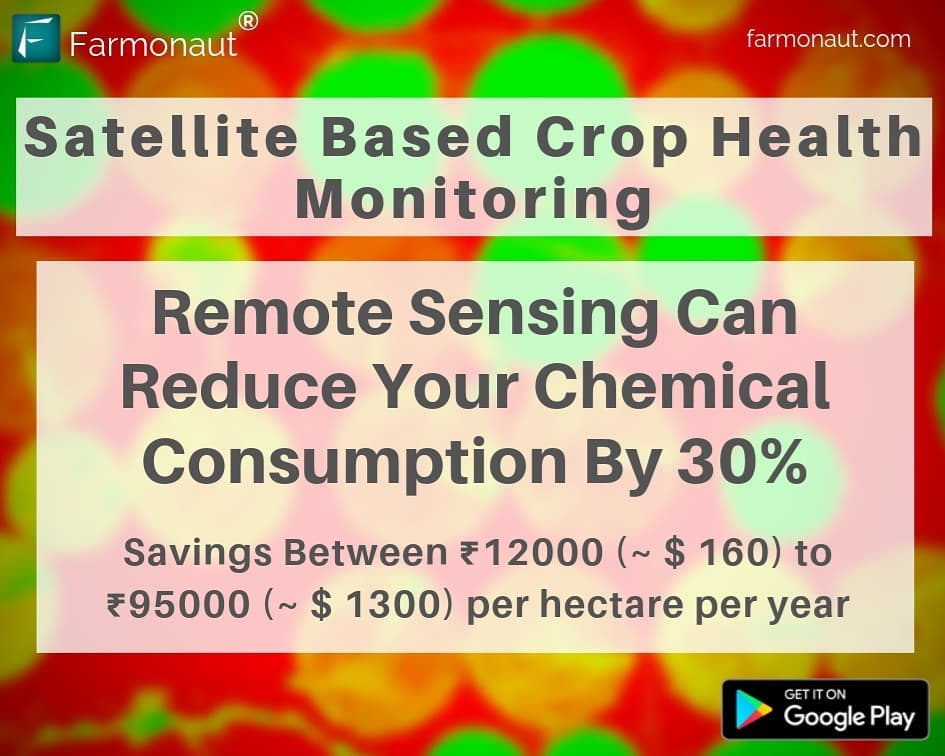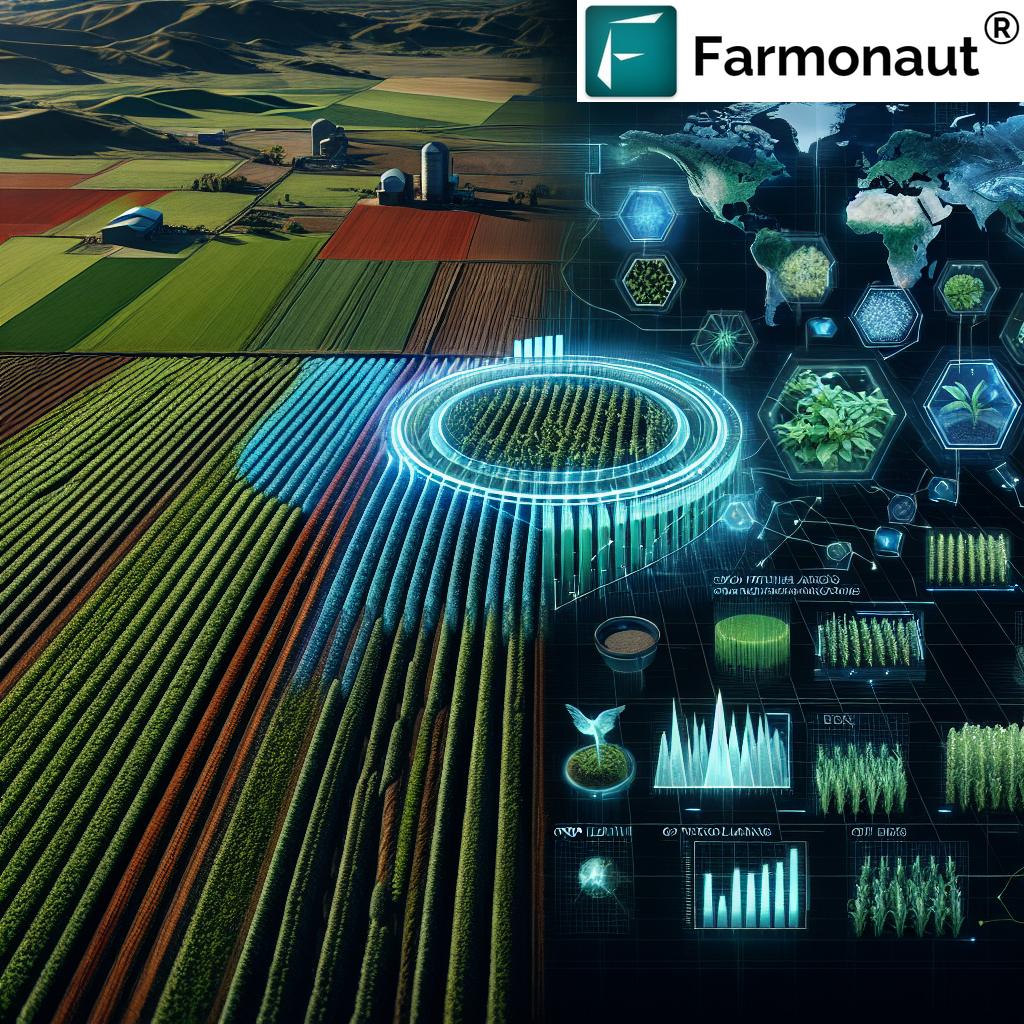Understanding NDVI in Agriculture: Full Form, Meaning, and Applications in Marathi

In the ever-evolving world of agriculture, precision farming techniques have become increasingly important. One such technique that has gained significant traction is the use of NDVI (Normalized Difference Vegetation Index). In this comprehensive blog post, we will explore the NDVI full form, its applications in agriculture, and its significance in the Marathi-speaking regions of India.
What is NDVI?
NDVI, which stands for Normalized Difference Vegetation Index, is a widely used remote sensing indicator to assess the health and vigor of vegetation. The NDVI full form in agriculture remains the same: Normalized Difference Vegetation Index. This index is calculated using satellite imagery and provides valuable insights into crop health, biomass, and overall agricultural productivity.
NDVI in Marathi: Understanding the Terminology
For our Marathi-speaking farmers and agricultural professionals, it’s essential to understand the terminology in their native language. The NDVI full form in agriculture in Marathi is “नॉर्मलाइज्ड डिफरन्स व्हेजिटेशन इंडेक्स” (Normalized Difference Vegetation Index). This translation helps bridge the language gap and makes the concept more accessible to local farmers.
The NDVI full form Marathi meaning can be broken down as follows:
- नॉर्मलाइज्ड (Normalized) – सामान्यीकृत
- डिफरन्स (Difference) – फरक
- व्हेजिटेशन (Vegetation) – वनस्पती
- इंडेक्स (Index) – निर्देशांक
When we talk about NDVI in Marathi, we’re referring to a powerful tool that helps farmers assess their crops’ health and make informed decisions about irrigation, fertilization, and pest management.
The Importance of NDVI in Agriculture
NDVI plays a crucial role in modern agriculture, offering numerous benefits to farmers and agricultural professionals:
- Crop Health Monitoring: NDVI allows farmers to detect early signs of stress in crops, enabling timely interventions.
- Yield Prediction: By analyzing NDVI data over time, farmers can make more accurate yield predictions.
- Resource Optimization: NDVI helps in optimizing the use of water, fertilizers, and pesticides, leading to more sustainable farming practices.
- Precision Agriculture: NDVI is a cornerstone of precision agriculture, enabling targeted interventions and reducing waste.
How NDVI Works
NDVI works by measuring the difference between near-infrared (NIR) light, which healthy vegetation strongly reflects, and red light, which vegetation absorbs. The formula for NDVI is:
NDVI = (NIR – Red) / (NIR + Red)
This calculation results in values between -1 and 1, where higher values indicate healthier vegetation.
NDVI Applications in Maharashtra Agriculture
In Maharashtra, where Marathi is the predominant language, understanding the NDVI long form in Marathi (नॉर्मलाइज्ड डिफरन्स व्हेजिटेशन इंडेक्स) is crucial for local farmers. Here are some specific applications:
- Monitoring cotton crops for pest infestations
- Assessing the health of sugarcane plantations
- Optimizing irrigation for grape vineyards
- Evaluating the growth of pomegranate orchards
Farmonaut: Revolutionizing Agriculture with NDVI Technology
At Farmonaut, we’re dedicated to making advanced agricultural technologies accessible to farmers worldwide. Our satellite-based farm management solutions incorporate NDVI data to provide real-time insights into crop health and productivity. Here’s how our system compares to traditional monitoring methods:
| Feature | Farmonaut Satellite System | Drone-based Monitoring | IoT-based Monitoring |
|---|---|---|---|
| Coverage Area | Large scale (thousands of hectares) | Limited (tens of hectares) | Localized (few hectares) |
| Frequency of Data | Every 3-5 days | On-demand (weather dependent) | Continuous |
| Cost-effectiveness | High | Medium | Low |
| Ease of Use | Very Easy (no on-field equipment) | Moderate (requires skilled operator) | Complex (requires installation and maintenance) |
| Data Analysis | Advanced AI-powered insights | Basic image analysis | Sensor-specific data |
Our platform provides farmers with easy-to-understand NDVI maps and insights, making it simple for even those who may not be familiar with the NDVI meaning in Marathi to benefit from this technology.
Integrating NDVI into Your Farming Practices
To integrate NDVI into your farming practices, consider the following steps:
- Sign up for a satellite-based farm monitoring service like Farmonaut. You can get started here.
- Regularly review NDVI maps of your fields to identify areas of concern.
- Use NDVI data to guide your irrigation, fertilization, and pest management decisions.
- Compare NDVI values over time to track crop progress and predict yields.
- Combine NDVI data with other information sources, such as weather forecasts and soil tests, for comprehensive farm management.
The Future of NDVI in Agriculture
As technology continues to advance, we expect to see even more sophisticated applications of NDVI in agriculture. Some potential developments include:
- Integration with AI and machine learning for more accurate crop yield predictions
- Combination with other remote sensing indices for more comprehensive crop analysis
- Development of crop-specific NDVI algorithms for enhanced precision
- Integration with automated farm equipment for real-time, data-driven field operations
Farmonaut’s Commitment to Agricultural Innovation
At Farmonaut, we’re committed to staying at the forefront of agricultural technology. Our services go beyond just providing NDVI data. We offer:
- AI-powered advisory systems through our Jeevn AI platform
- Blockchain-based traceability solutions for supply chain transparency
- Fleet and resource management tools for optimized operations
- Carbon footprinting capabilities to support sustainable farming practices
To learn more about our comprehensive suite of tools, visit our API documentation or download our mobile app for Android or iOS.
Supporting Marathi-Speaking Farmers
We understand the importance of language accessibility in agriculture. That’s why we’re dedicated to providing resources and support in Marathi, including explanations of key terms like the NDVI full form in agriculture in Marathi. Our goal is to ensure that all farmers, regardless of their language background, can benefit from advanced agricultural technologies.
Conclusion
Understanding NDVI and its applications in agriculture is crucial for modern farmers, especially in regions like Maharashtra where Marathi is widely spoken. By leveraging technologies like those offered by Farmonaut, farmers can make data-driven decisions that lead to increased productivity, sustainability, and profitability.
We invite you to explore how Farmonaut can transform your farming practices. Subscribe to our services and join the precision agriculture revolution:
FAQ Section
Q: What is the full form of NDVI?
A: NDVI stands for Normalized Difference Vegetation Index.
Q: How is NDVI useful in agriculture?
A: NDVI helps in assessing crop health, predicting yields, optimizing resource use, and enabling precision agriculture practices.
Q: What is the NDVI full form in Marathi?
A: In Marathi, NDVI is translated as “नॉर्मलाइज्ड डिफरन्स व्हेजिटेशन इंडेक्स” (Normalized Difference Vegetation Index).
Q: How often should I check NDVI data for my crops?
A: It’s recommended to check NDVI data every 3-5 days, which is the typical frequency provided by satellite-based services like Farmonaut.
Q: Can NDVI help me save money on farm inputs?
A: Yes, NDVI can help optimize the use of water, fertilizers, and pesticides, potentially leading to significant cost savings.
Q: Is NDVI data difficult to interpret?
A: While raw NDVI data can be complex, services like Farmonaut provide easy-to-understand visualizations and insights, making interpretation straightforward for farmers.
Q: How does Farmonaut’s NDVI monitoring compare to drone-based solutions?
A: Farmonaut’s satellite-based NDVI monitoring offers wider coverage, more frequent updates, and is more cost-effective compared to drone-based solutions.
Q: Can I use NDVI data for all types of crops?
A: Yes, NDVI is useful for a wide range of crops, though interpretation may vary slightly depending on the specific crop and growth stage.
Q: How can I get started with using NDVI on my farm?
A: You can start by signing up for Farmonaut’s services at https://farmonaut.com/app_redirect and exploring our satellite-based farm monitoring tools.
Q: Is there a mobile app available for accessing NDVI data?
A: Yes, Farmonaut offers mobile apps for both Android and iOS platforms, allowing you to access NDVI data and other farm insights on the go.

By embracing NDVI technology and understanding its applications, farmers in Maharashtra and beyond can take significant steps towards more efficient and sustainable agriculture. Whether you’re familiar with the NDVI long form in Marathi or just beginning to explore this technology, Farmonaut is here to support your journey towards precision farming.
For more information on our satellite-based farm monitoring services and to access our comprehensive API documentation, visit https://farmonaut.com/farmonaut-satellite-weather-api-developer-docs/. Join us in revolutionizing agriculture, one field at a time.












